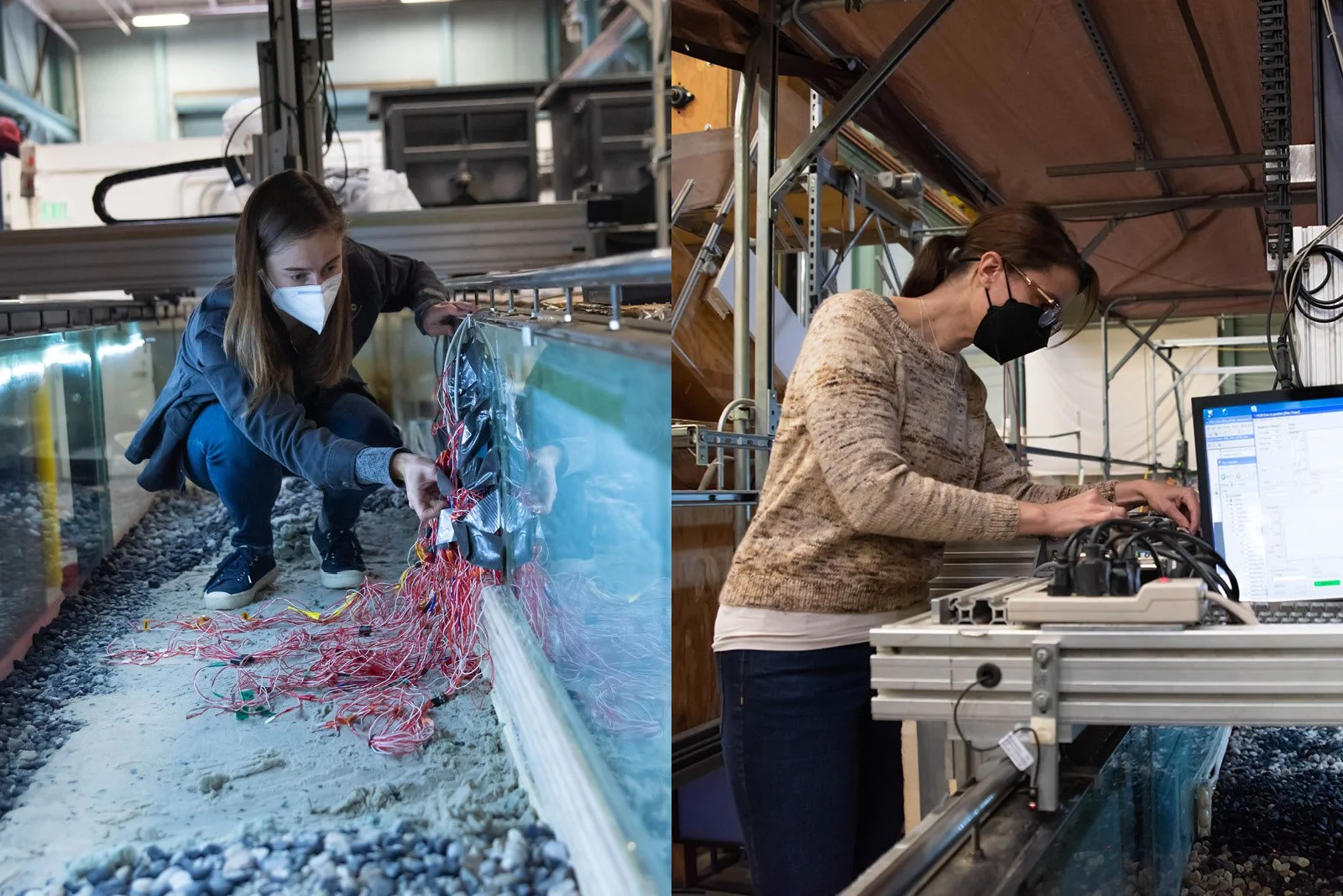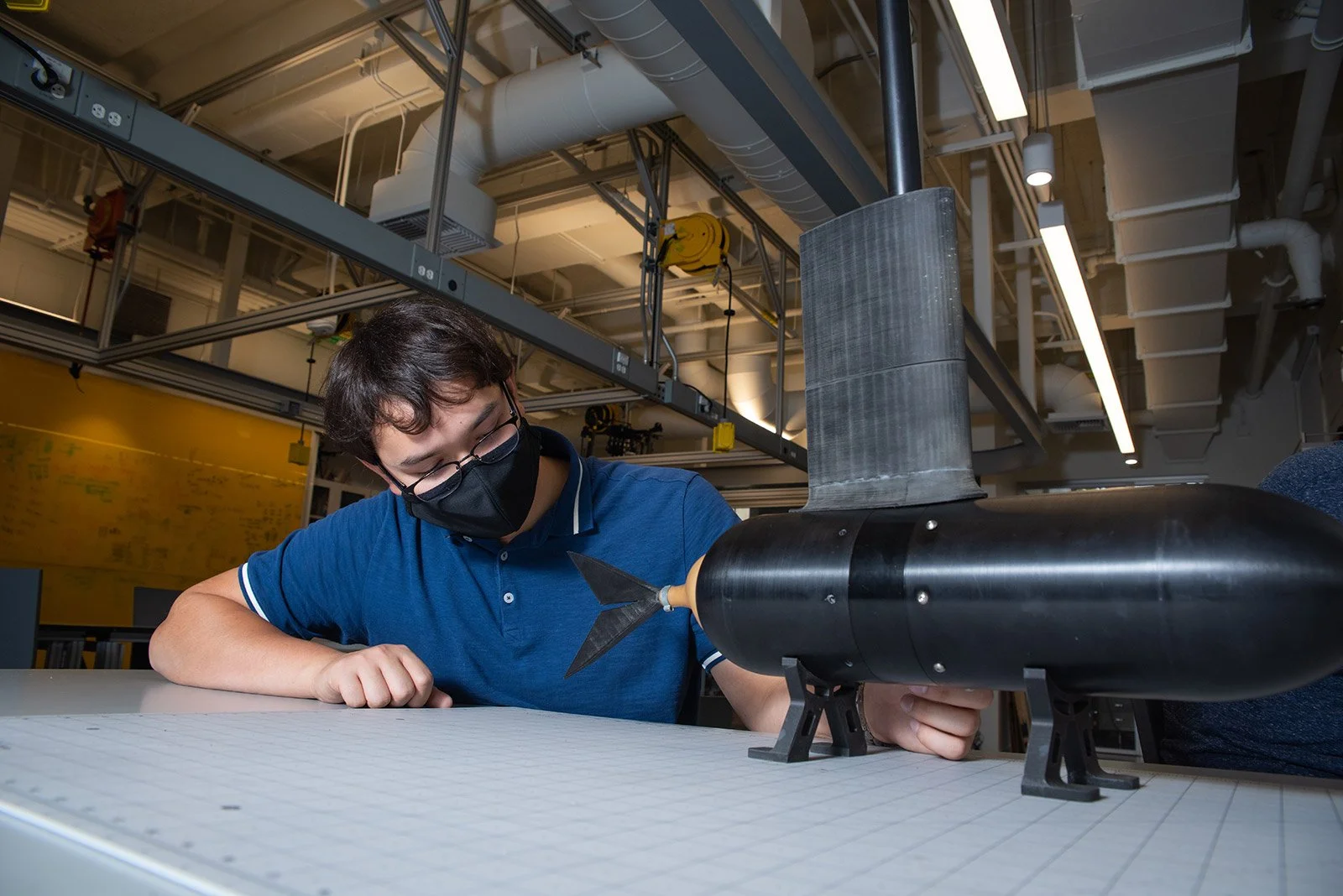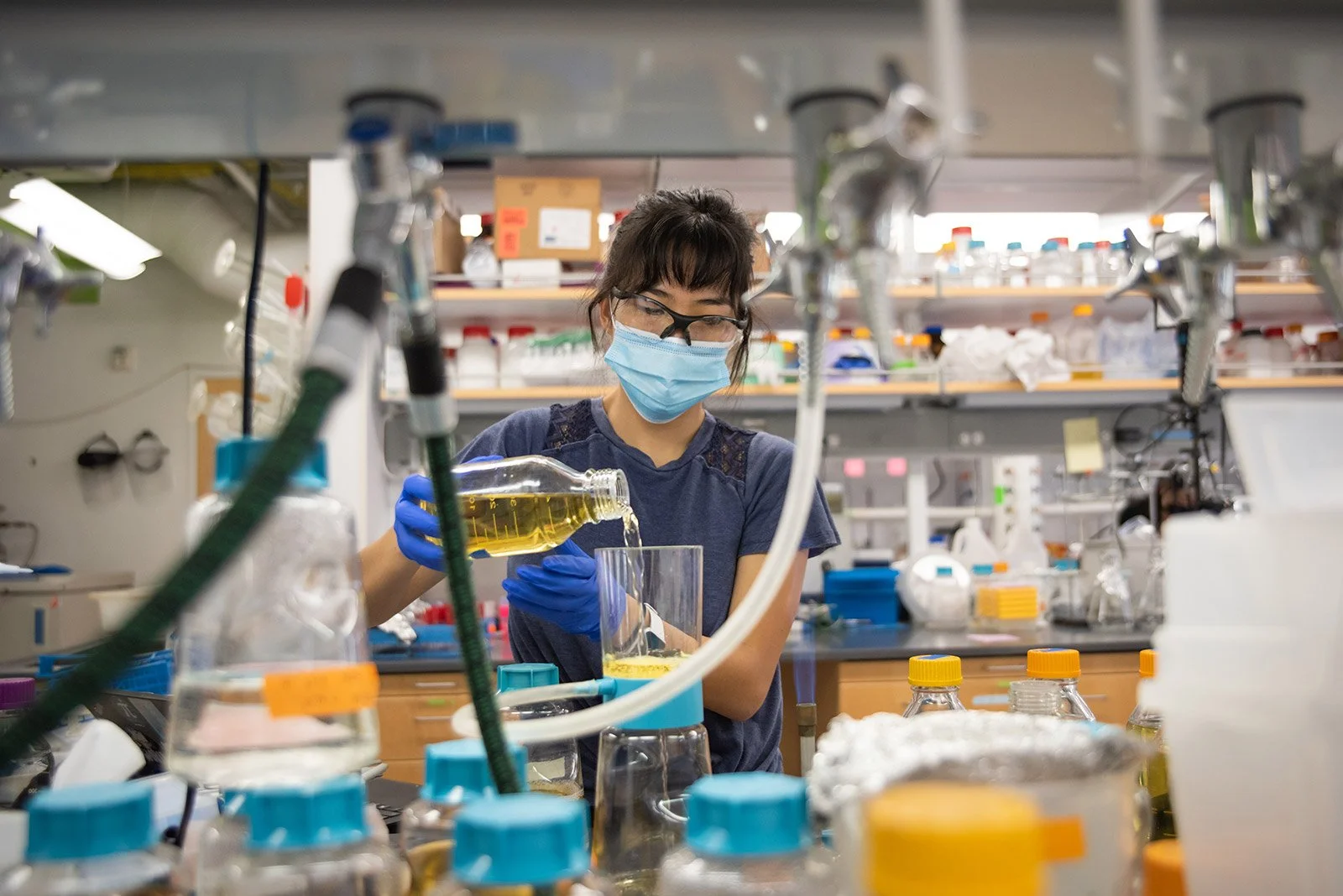How Laboratory Research and Learning Continue at Caltech During a Pandemic
Although the COVID-19 pandemic has changed the safety protocols for conducting research at Caltech, it hasn't altered the diverse and innovative nature of the work. Here are some of the students and researchers whose pursuit of science has continued undaunted these past two years.
Reina Buenconsejo, a graduate student in the lab of Paul Wennberg, the R. Stanton Avery Professor of Atmospheric Chemistry and Environmental Science and Engineering, studies how the chemical makeup of air pollutants has changed in the Los Angeles Basin over the past 10 years. As part of a field campaign in collaboration with the National Oceanographic and Atmospheric Administration (NOAA) to better understand trends in air quality, Buenconsejo took ambient air samples last summer and compared that data to information collected 10 years ago. The instrument she uses is a gas chromatographer in tandem with a chemical ionization mass spectrometer (GC-CIMS).
Graduate student Madison Douglas (left) is a member of the Surface Processes Group run by Mike Lamb, professor of geology. Here, she sets up temperature sensors while constructing a frozen sand bank in the Earth Surface Dynamics Laboratory, also called the Caltech Flume Lab. Her work focuses on the fact that the Arctic is warming rapidly, which leads the region’s rivers to thaw and erode permafrost in the riverbanks. This can cause ground collapses that threaten many Arctic communities. Douglas’s experiments use an ice rink chiller to simulate permafrost bank erosion under controlled conditions to determine what happens to bank erosion rates under Arctic warming conditions.
On the right, Lamb lab manager Kimberly Miller works on the laser measurement cart. This instrument creates topographic maps of the simulated permafrost rivers that the lab studies.
Graduate student Nathan Jones (left) and Ruby Fu, assistant professor of mechanical and civil engineering (right), use dye to analyze the fluid dynamics of water as it flows through lab-created snow. Fu’s group seeks to more accurately model how water resources stored in snowpacks would respond to climate change. Read more about her work in this Caltech magazine feature.
In the lab of John Dabiri, Centennial Professor of Aeronautics and Mechanical Engineering, graduate student Nina Mohebbi studies the performance of seawater batteries, which can operate in the ocean by using ambient seawater as the battery’s electrolyte. The seawater battery has the potential to be a long-lived, low-cost, environmentally safe power source for small sensors placed in the ocean. Here, Mohebbi is swapping out an old seawater battery for a new one on a test platform in the Dabiri lab.
For his Summer Undergraduate Research Fellowship (SURF) in 2021, Caltech junior Tyler Nguyen worked with Mory Gharib (PhD '83), the Hans W. Liepmann Professor of Aeronautics and Bioinspired Engineering, on a fish-inspired robot that can propel itself through water using a mechanical fin. Such underwater robots are used in deep-sea surveys and could one day be used to explore extraterrestrial ocean worlds such as Europa and Enceladus.
Anvay Pradhan (left), a student at the University of Iowa, came to Caltech in the summer of 2021 for a Summer Undergraduate Research Fellowship (SURF) in which he partnered with Ke (Chris) Liu (right), a postdoctoral scholar in the lab of Chiara Daraio, G. Bradford Jones Professor of Mechanical Engineering and Applied Physics. They worked to develop a metamaterial that can tune its permeability, the rate at which a fluid can flow through the material. The colorful assemblage of paper at bottom right is a preliminary model of that material based on an origami pattern called the Miura pattern.
Students in the Earth's Oceans (ESE 102) class learned how the ocean moves heat from lower latitudes toward the coast of Antarctica. Andy Thompson, professor of environmental science and engineering, uses a "rotating table" experiment that reproduces the influence of Earth's rotation on ocean currents. Thompson’s table shows how swirling ocean eddies, the marine equivalent of atmospheric storms, move heat (represented by food coloring in this experiment) from the edge of the tank toward a bucket of ice representing Antarctica. A camera attached to the rotating table allows students to observe the fluid in much the same way as satellites would observe the oceans on the rotating Earth.
Gabriele Vajente, a senior research scientist for the Laser Interferometer Gravitational-wave Observatory (LIGO), works with coatings for the LIGO mirrors. Vajente tests coatings deposited on glass discs that are smaller than the real mirrors and therefore easier to handle. The disc is then placed inside a vacuum chamber where its mechanical properties and energy dissipation can be measured. The less energy that is dissipated in the mirrors, the more sensitive the LIGO detectors will be. The optics technology used to steer the laser beam that probes the disc vibrations is visible in the foreground.
For her 2021 Summer Undergraduate Research Fellowship (SURF), Caltech sophomore Ann Zhu worked with Mikhail Shapiro, professor of chemical engineering, on a project aimed at improving the diagnosis of inflammatory bowel diseases and pinpointing sites of inflammation. She engineered E. coli bacteria to express certain protein nanostructures that the researchers can image in the lab. In this photo, Zhu is using vacuum filtration to sterilize pH-adjusted media next to a Bunsen burner.









